It’s been a summer of flower shows: first the prestigious RHS Chelsea Flower Show in May, now the RHS Hampton Court Palace Garden Festival (which is still running until Sunday 6th July, if you haven’t snapped up a ticket).
While events like these present the very best of garden design, they are peppered with easy, take-home ideas we can all try ourselves (even if it’s as simple as reviving a wilting houseplant).
We visited RHS Hampton on press day (Monday 30th June) and took note of what was growing — and what we could attempt to grow at home. Keep reading to find out more about the three standout plants and flowers we’re planning on adding to our plot:
1. Coneflowers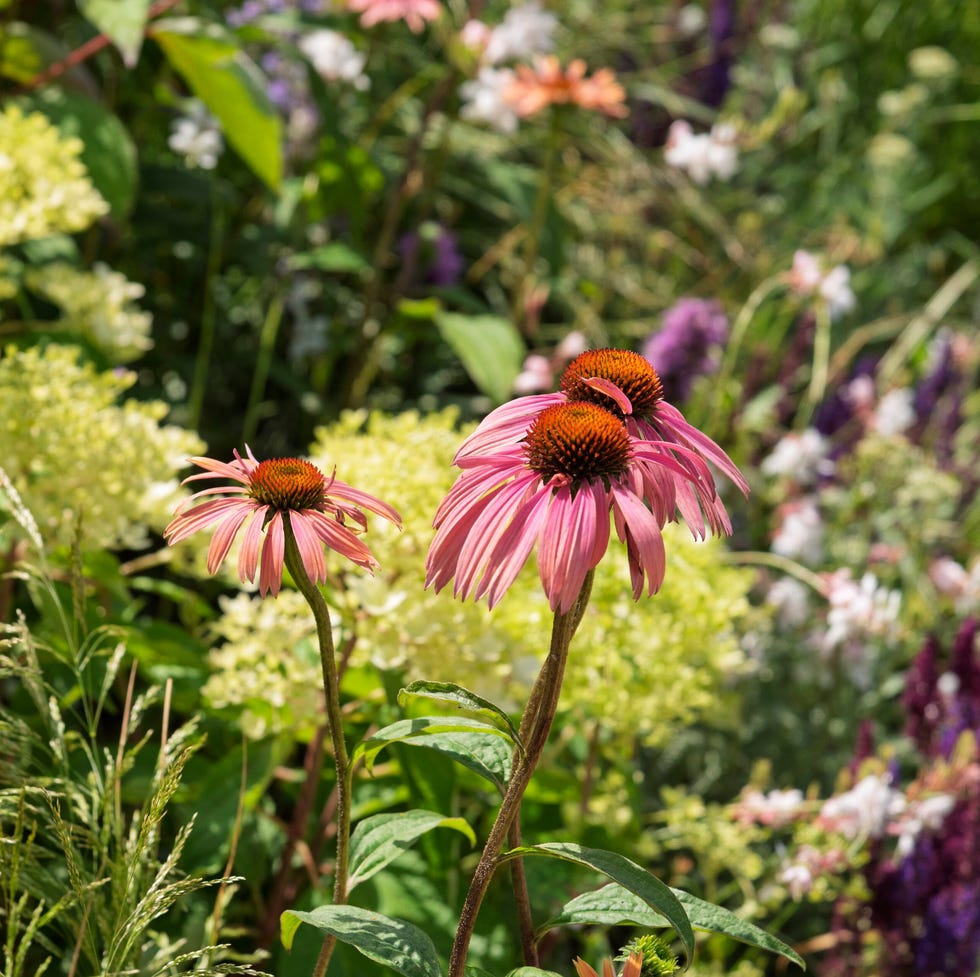
Tim Sandall//Getty Images
Coneflowers in the Welcoming Wildlife garden, designed by Henry T Pope
With large, daisy-like flowers, coneflowers are one of the easiest perennials to grow in the garden.
Perfect for pots, borders, and front gardens, they require only the basics to thrive: regular watering of around an inch per week, a layer of compost added in spring, and deadheading to encourage a new flush of blooms.
In the Welcoming Wildlife Pocket Planting garden at Hampton, coneflowers stood tall, attracting bees, butterflies, and other insects like dragonflies. Chosen for their loose and relaxed feel, they were planted alongside spires of Verbascum bombyciferum, the rich purple flower Liatris spicata, and Geranium ‘Azure Rush’.
Meanwhile, The Garden of Two Tales in the Gardens of Curiosity category featured dazzling white coneflowers with pretty drooping petals. The space was designed to be wildlife-friendly, taking inspiration from traditional cottage-style gardens.
2. Eryngium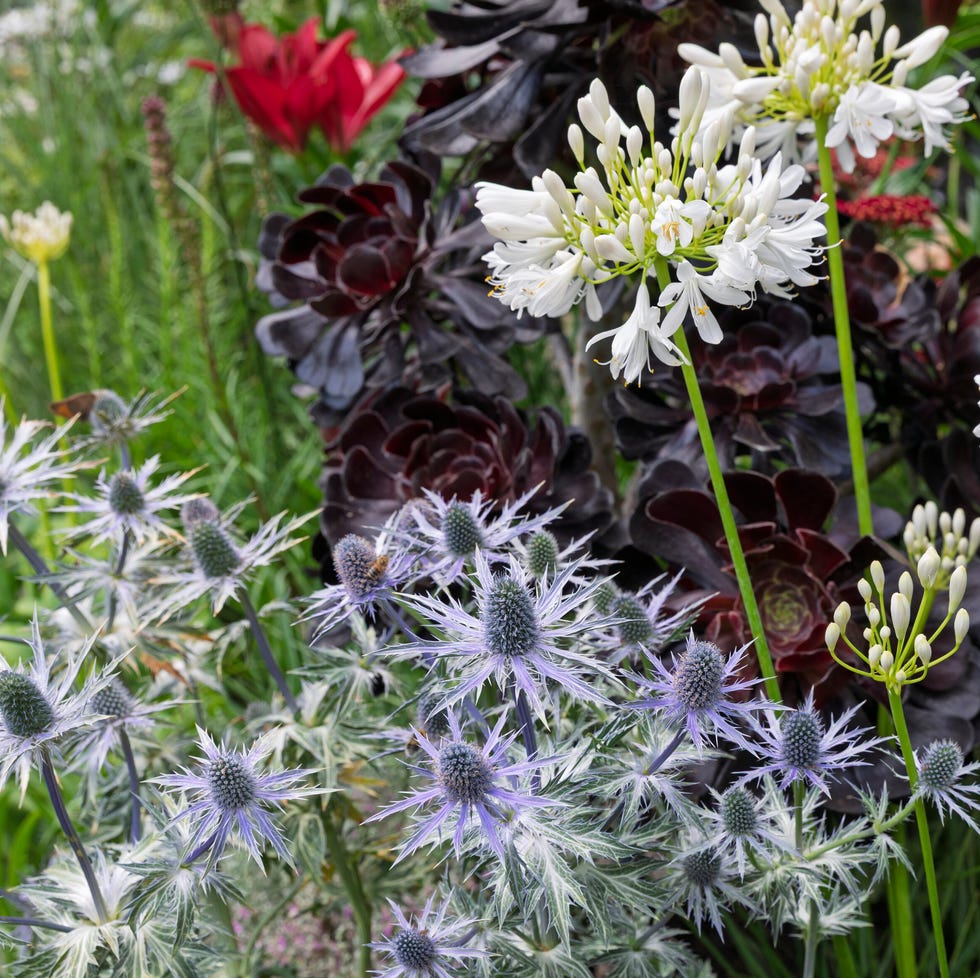
Sarah Cuttle
The Illusion 2050 garden at RHS Hampton
Adding texture and colour to many Show Gardens, the Eryngium was another key flower providing instant impact.
The Illusion 2050 modern courtyard garden used the blue flower to highlight drought-tolerant gardens and raise awareness about sustainable design. With spiky, silvery-green foliage, they thrive well in full sun, making them a suitable choice for dry, sunny borders and gravel gardens.
Meanwhile, Eryngium also stood out in the Hot Pocket garden designed by Tom Pilgrim. Inspired by dry meadows and gravel gardens, this space also focused on drought-tolerant plants that can thrive and survive in hot and dry conditions.
3. Ferns 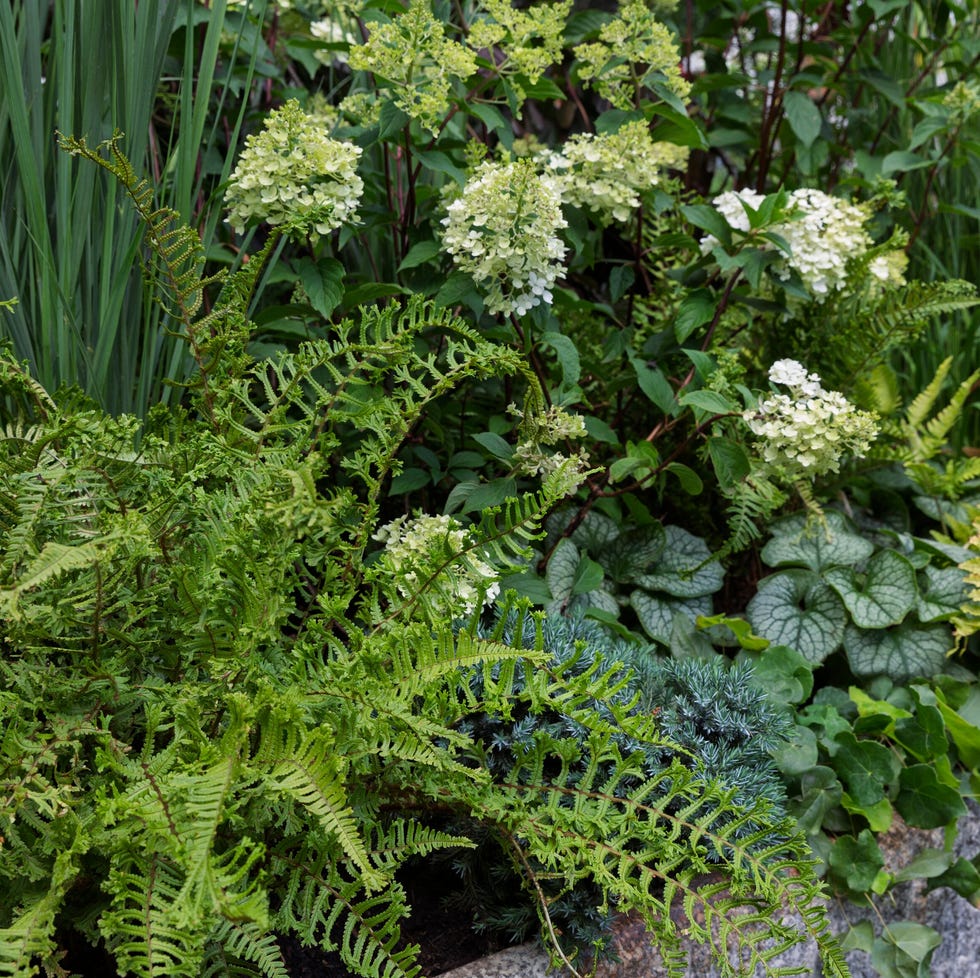
Sarah Cuttle
The Illusion 2050 Garden at RHS Hampton
Shade-tolerant ferns are magnificent plants, most commonly found thriving in UK woodlands. But who says you can’t make them an integral part of your plot?
At RHS Hampton, ferns were a key component in the Illusion 2050 garden, plus the Subaru Cocoon show garden, which draws on the beauty of rainforests.
Providing shade, shelter, and erosion protection, ferns offer ample contributions to the areas in which they are placed. To grow ferns successfully, plant them between May and September in well-drained but moist soil. They prefer partial shade or dappled sunlight and will survive in both pots and borders.
You’ll have a Hampton-inspired garden in no time.
5 of the best drought tolerant garden plants Cistus
Cistus
The bushy rock rose is a sun-loving evergreen plant that carries mounds of bright coloured flowers from white through to bright magenta. Ideal in sunny borders or large containers.
BUY NOW
Antoni Agelet//Getty Images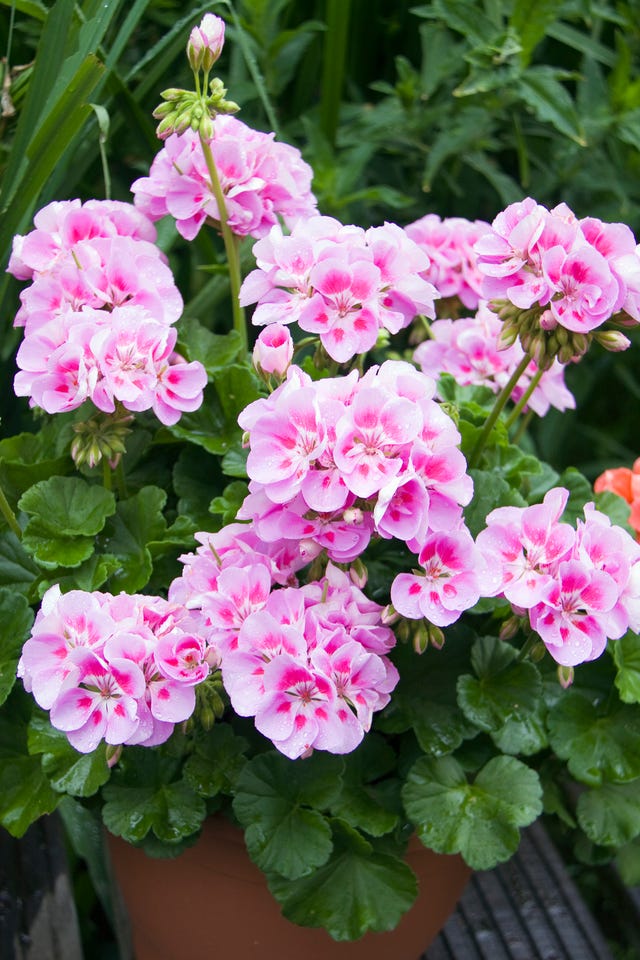 Pelargoniums (geraniums)
Pelargoniums (geraniums)
Geraniums are the ultimate summer sizzler – drought-tolerant, brilliantly colourful and so easy to care for. The scented varieties are particularly good in the hot sunshine which is especially good news if you have planted them in pots or hanging baskets. There are so many varieties available too!
BUY NOW
Photos Lamontagne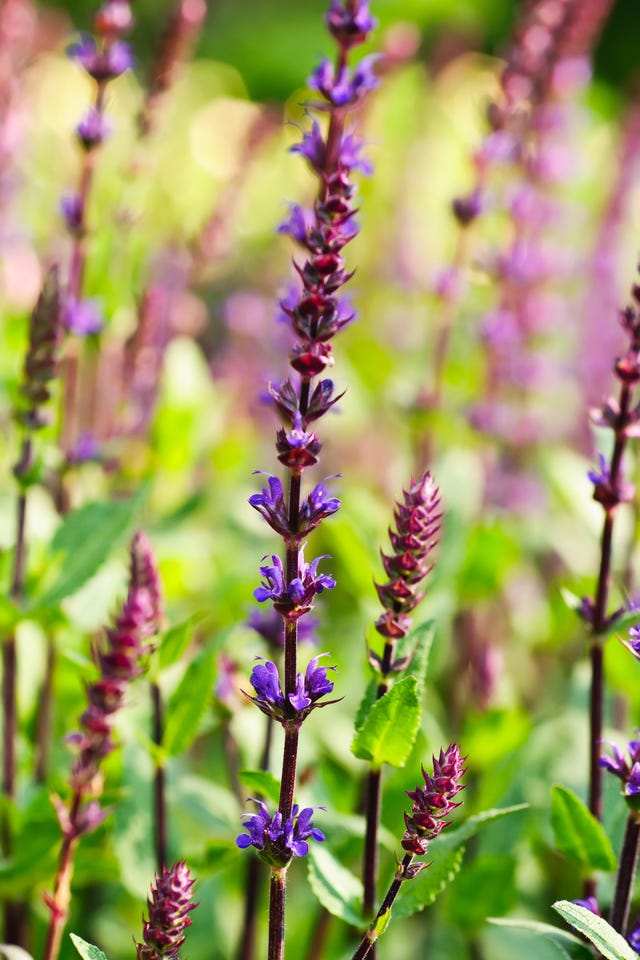 Perovskia
Perovskia
Russian Sage has aromatic silvery foliage and violet blue flowers. They can be used as a cut flower and are great as a companion to other late summer flowering plants like Gaura and ornamental grasses.
BUY NOW
Camrocker//Getty Images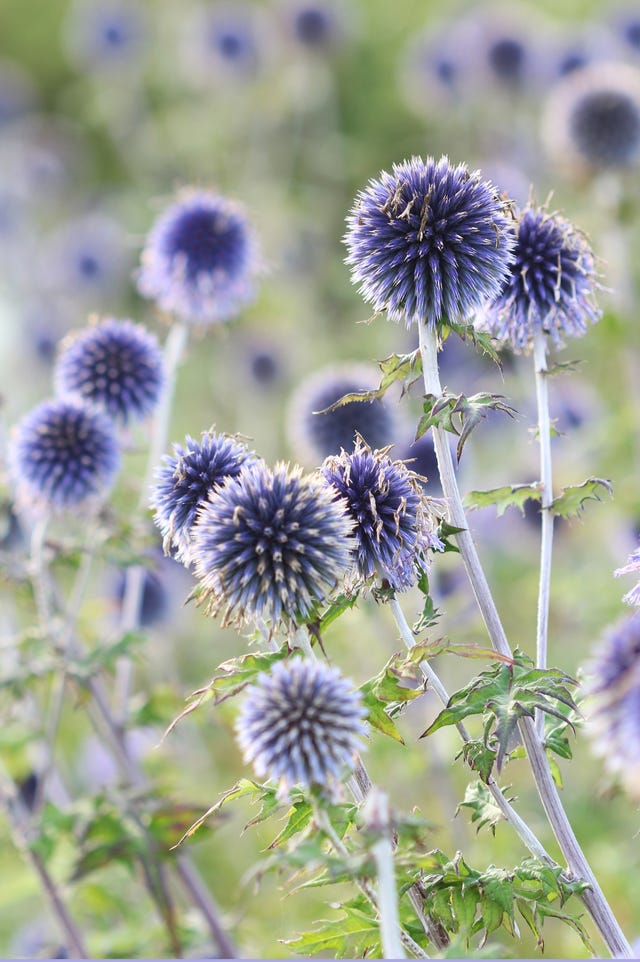 Echinops
Echinops
Echinops are easy to grow big thistles, that have globes of tightly packed blue flowers which open into tiny stars carried on slender stiff stems. They are very attractive to bees and butterflies. ‘Veitch’s Blue’ is great for the smaller garden.
BUY NOW
Kathy Medcalf Photography//Getty Images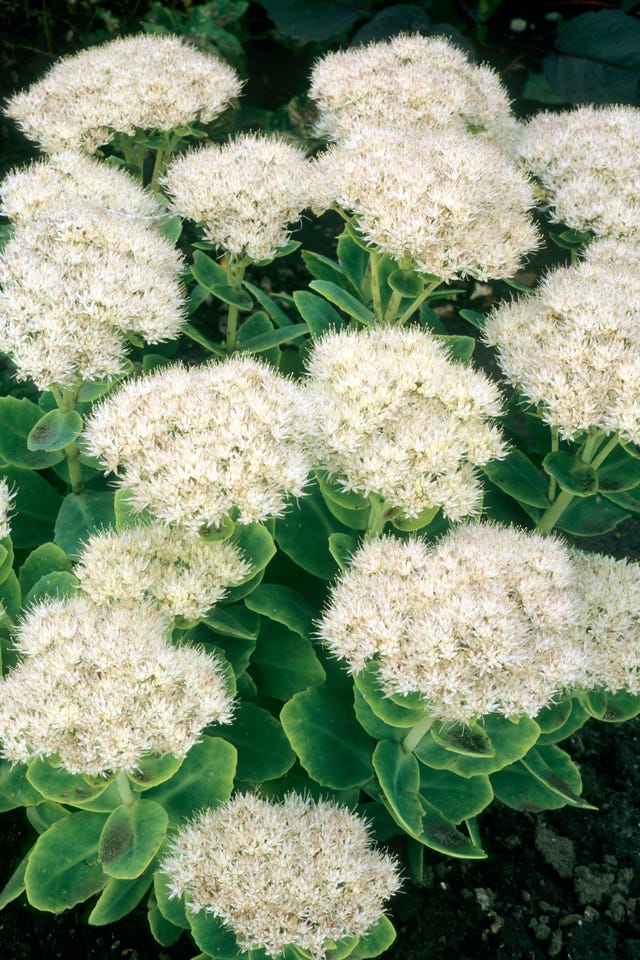 Sedums
Sedums
Sedums, which are often found in rock gardens along with succulents and house leeks, never flag due to their plump foliage which acts as water storage tanks. These plants are great for a green roof too.
BUY NOW
Neil Holmes//Getty ImagesLisa Joyner
Deputy Daily Editor, Country Living and House Beautiful
Lisa Joyner is the Deputy Daily Editor at House Beautiful UK and Country Living UK, where she’s busy writing about home and interiors, gardening, dog breeds, pets, health and wellbeing, countryside news, small space inspiration, and the hottest properties on the market. Previously, she has written for Conde Nast Traveller, House & Garden and Marie Claire magazine. Lisa studied at University For The Creative Arts, where she completed a BA in Fashion Journalism.

